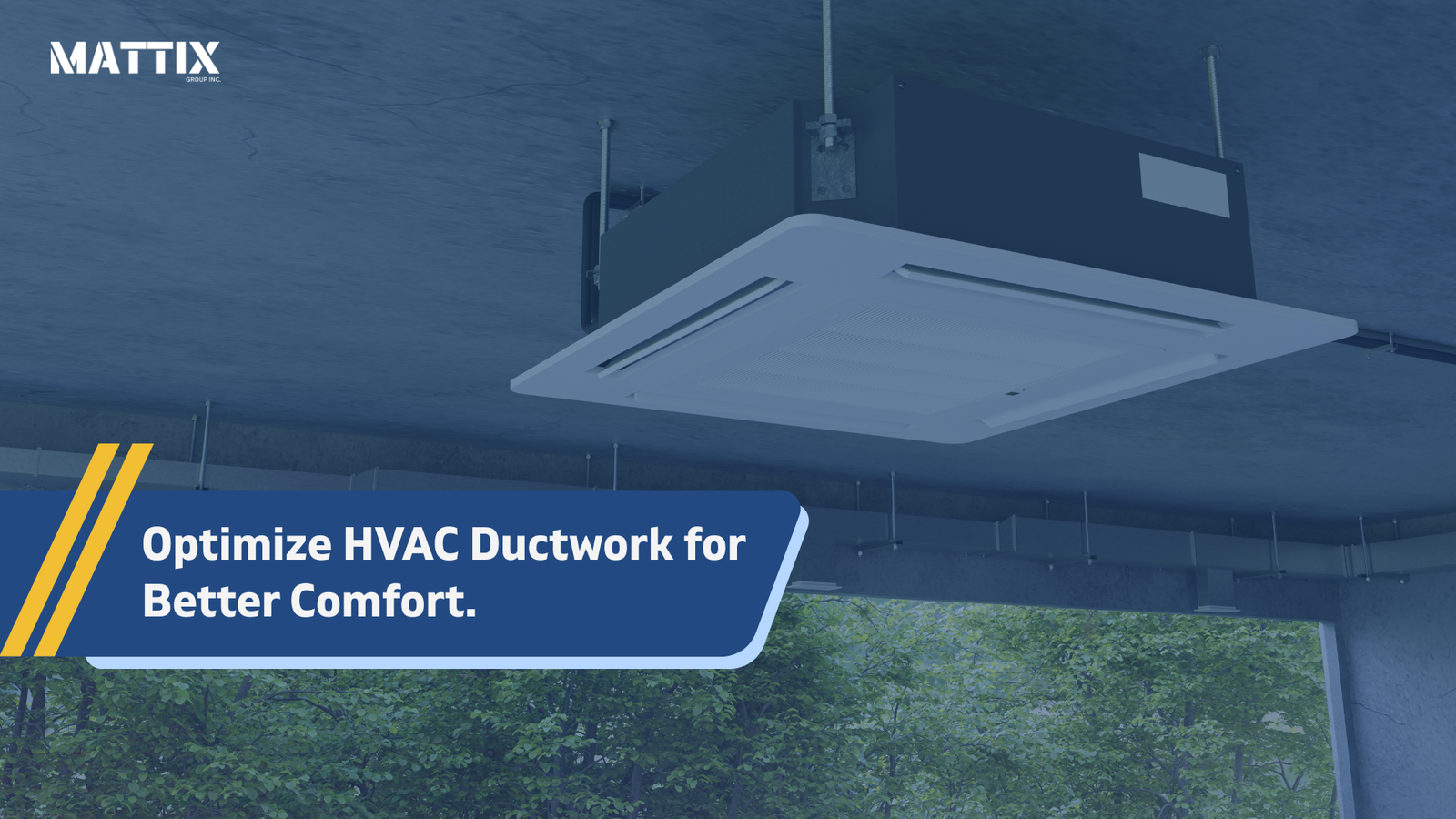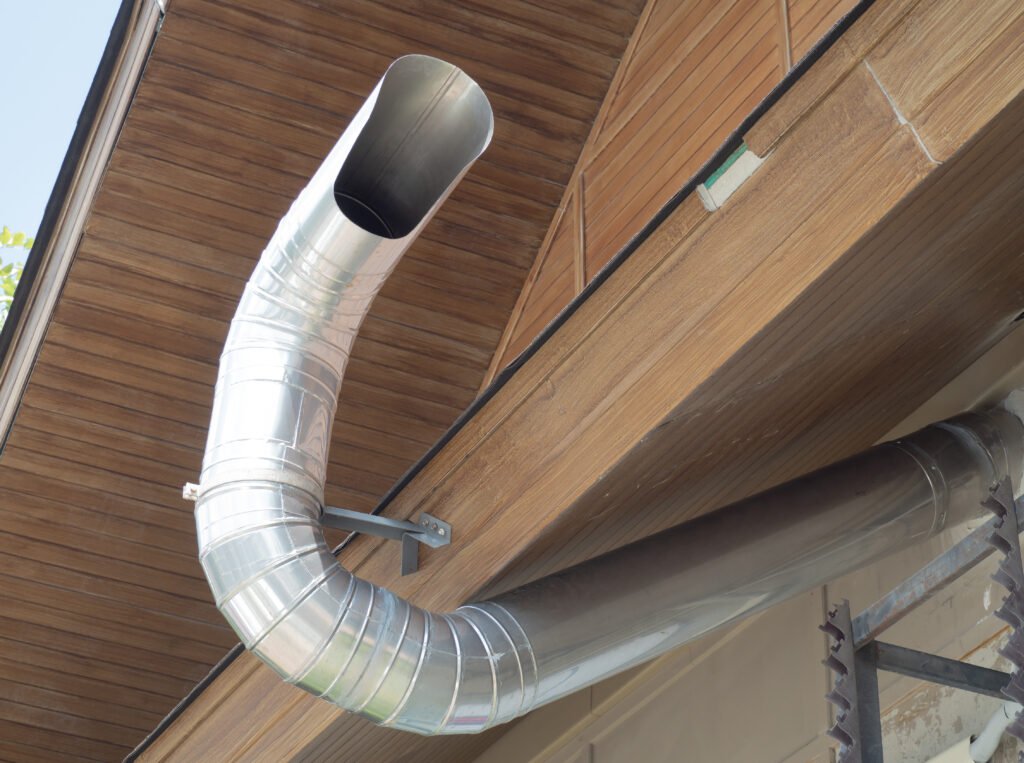
For homeowners across Canada, the quest for perfect indoor comfort is a year-round endeavour. We brace for frigid winters with our furnaces working overtime and seek refuge from humid summer days with our air conditioners running full blast. We diligently change filters, program our thermostats, and seal our windows, but what if the biggest culprit behind those drafty rooms, stuffy attics, and shocking energy bills is hiding in plain sight, just behind our walls and ceilings, Yeah you are right the HVAC system.
Meet your home’s ductwork: the extensive network of passages that acts as the circulatory system for your heating, ventilation, and air conditioning (HVAC) system. While your furnace and air conditioner create the warm or cool air, it’s the ductwork that’s responsible for delivering it efficiently and effectively to every corner of your home. If this system is poorly designed, leaky, or improperly maintained, even the most advanced, high-efficiency HVAC unit can’t do its job properly. The result is a constant battle for comfort, wasted energy, and a less healthy living environment.
This comprehensive guide will illuminate the critical role of your ductwork. We’ll explore why its design is so vital, how to spot the warning signs of a failing system, and what professional services can transform your home into the consistently comfortable and efficient sanctuary you deserve.
What is Ductwork? The Unseen Network Powering Your Home
At its core, ductwork is a branching network of tubes—typically made of sheet metal, fiberglass, or flexible plastic—that transports conditioned air. It’s a two-way street:
- Supply Ducts: These channels carry heated or cooled air from your HVAC unit out to the individual rooms through vents or registers.
- Return Ducts: The channels pull stale air from your living spaces and return it to the HVAC unit to be filtered and re-conditioned.
A balanced system requires both supply and return pathways to be in optimal condition. Without adequate return air, your HVAC system can be starved for air, creating pressure imbalances that reduce efficiency and strain components.

- Rigid Ductwork: Often made of galvanized steel or aluminum, this is the most durable and reliable type of duct. Its smooth, non-porous surface makes it difficult for mold to grow and easy to clean.
- Flexible Ductwork: This tube-like ducting consists of a wire coil wrapped in plastic and insulation. Technicians use it to connect rigid ducts to supply outlets in tricky or tight spaces, but it is more prone to kinks, crushing, and leaks if installed without care.
- Fiberboard Ducts: These are made of compressed fiberglass, which provides built-in insulation. While they are good at dampening sound, they can be susceptible to moisture and mold growth if not perfectly sealed, and can degrade over time.
Understanding this hidden network is the first step toward appreciating its impact on your daily comfort and monthly budget.
Why HVAC Ductwork Design is Non-Negotiable
You wouldn’t build a house on a shaky foundation, and the same principle applies to your HVAC system. The design of the ductwork is its foundation, and getting it right from the start is paramount. A professionally designed system goes far beyond simply connecting Point A to Point B. It’s a science that involves precise calculations to ensure balanced airflow and peak performance. As the experts at Main Street Comfort note, proper ductwork design is vital for uniform temperature.

Here are the core elements of a professional ductwork design:
- Load Calculation: Before any ducts are installed, a professional will perform a “Manual J” load calculation. This detailed assessment considers your home’s size, layout, insulation levels, window types, local Canadian climate data, and even the number of occupants to determine exactly how much heating and cooling your home needs.
- Sizing (The “Manual D” Calculation): Based on the load calculation, each and every duct run is precisely sized. Ducts that are too small create high air velocity, leading to noisy operation and insufficient airflow. Ducts that are too large will have sluggish airflow, meaning the conditioned air may not reach the furthest rooms at the right temperature.
- Layout and Routing: An ideal layout uses the straightest, shortest paths possible to minimize friction and pressure loss. It avoids sharp turns and long, convoluted runs of flexible ducting, which can severely impede airflow. The placement of supply registers and return grilles is also strategically planned to promote proper air circulation within each room, eliminating drafts and stagnant air.
When builders or unqualified installers skip these critical design steps, they create a system that is inefficient from day one. It’s a shortcut that leads to a lifetime of comfort problems and high energy costs for the homeowner.
7 Telltale Signs Your HVAC Ductwork Needs Attention
Because ductwork is mostly out of sight, it’s easy to put it out of mind. However, it will send clear signals when it’s not performing as it should. If you notice any of the following issues, your ducts are likely crying out for help.
1. Hot and Cold Spots:
This is the number one symptom of a ductwork problem. If your basement is always freezing in the winter while the upstairs bedrooms are sweltering, it’s a classic sign of unbalanced airflow. This could be due to leaks, blockages, or an improper design that fails to deliver enough conditioned air to certain areas.
2. Shockingly High Utility Bills:
Your energy bills are a direct reflection of your HVAC system’s efficiency. According to many energy experts, leaky ducts can be responsible for losing 20-30% of the air that moves through them. This means your furnace or AC has to run longer and harder to compensate for that wasted air, driving your energy consumption—and your bills—through the roof.
3. Poor and Worsening Indoor Air Quality:
Your ductwork can have a significant impact on your home’s air quality.[1] Leaky return ducts are especially problematic, as they can pull in dust, insulation particles, mold spores, and other contaminants from your attic, crawlspace, or wall cavities and distribute them throughout your home. If you notice excessive dust, or if family members are experiencing worsening allergies or respiratory issues, your ducts could be the culprit.
4. Strange Noises:
Your HVAC system should operate with a gentle hum. Loud or unusual noises are a red flag.
- Whistling or Hissing: Often indicates a leak in the ductwork or a register that is closed or blocked.
- Rattling or Vibrating: Can be caused by loose connections or ducts that are not properly secured.
- Booming or Banging: A loud bang when the system kicks on or off can be caused by undersized ducts that are flexing under pressure changes.
5. Visible Dust and Debris Around Vents:
Take a look at your supply vents. Are they surrounded by a layer of dust on the ceiling or wall? This often means the duct system is dirty, or that leaks near the connection are blowing dusty air from behind the drywall into the room.
6. Musty or Stale Odors:
If you notice a persistent musty smell when your HVAC system turns on, it could be a sign of mold or mildew growing inside the ductwork due to moisture issues. This is a serious problem that requires immediate professional attention.
7. Inconsistent Airflow:
Hold your hand up to different vents in your home. Does the airflow from some feel strong while others are barely blowing? This is another indicator of leaks, blockages, or crushed ducts that are restricting the flow of air to certain parts of your home.
Ripple Effect of Neglected Ducts: Cost, Comfort, and Health
Ignoring these warning signs leads to more than just small problems. In fact, it creates a significant and costly ripple effect throughout your home. Therefore, investing in professional ductwork services is crucial. It helps you maintain the long-term health of your entire HVAC system.
Here’s how neglected ducts can negatively affect your home:
- Massive Energy Waste: First, leaky ducts make you pay for conditioned air that never even reaches your living spaces. This wasted energy is bad for your wallet. Moreover, it harms the environment by unnecessarily increasing your carbon footprint.
- Reduced HVAC Lifespan: Furthermore, poor ductwork shortens your HVAC system’s life. When ducts are leaky or restrictive, they put constant strain on your furnace and air conditioner. This specifically overworks the blower motor and other critical parts. As a result, the added wear leads to more frequent breakdowns. Ultimately, it can force a premature and expensive replacement.
- Compromised Home Comfort: Your comfort is also on the line. The primary job of your HVAC system is, of course, to keep you comfortable. Faulty ducts, however, make this impossible. This often leads to a frustrating cycle. You find yourself constantly adjusting the thermostat, using space heaters, or running fans just to correct the imbalances.
- Serious Health Concerns: Finally, you must consider the serious health risks. In Canada, we seal our homes tightly for much of the year. Because of this, good indoor air quality is extremely important. Leaky ducts can introduce mold, dust, and other allergens into your breathing air. The system then circulates these pollutants everywhere. This can contribute to a wide range of health issues, from chronic allergies and asthma to headaches and fatigue.
Professional HVAC: Reclaiming Your Comfort and Efficiency
Fortunately, you can solve these ductwork problems. You might feel tempted to grab some duct tape and try to fix the issue yourself. Moreover, effective ductwork service truly requires professional expertise and specialized equipment.
Let’s look at the key professional services that restore your ductwork’s performance.
- Duct Sealing: First, consider duct sealing. This service usually offers the biggest impact for most homes. To begin, a professional conducts a diagnostic test. They often use tools like a blower door and duct blaster to find the exact location of every leak. Then, they use special materials to fix them. For instance, they apply mastic sealant and foil tape to permanently seal all joints, seams, and connections.
- Duct Insulation: Next up is duct insulation. This is an absolutely essential service for homes in Canada. Specifically, you must insulate any ducts that run through unconditioned spaces like your attic, garage, or crawlspace. Without proper insulation, you waste a lot of energy. For example, during our cold winters, furnace heat quickly escapes into your frigid attic. Similarly, in summer, chilled air warms up before it even reaches your rooms.
- Professional Duct Cleaning: Also, think about professional duct cleaning. Over time, your ducts collect a surprising amount of dust, pet dander, and other debris. Consequently, a professional cleaning becomes essential for your family’s health. Technicians use powerful tools like industrial vacuums, rotating brushes, and compressed air.
- Duct Repair and Rerouting: Finally, there’s repair and rerouting. Sometimes, you might face more serious issues. For example, you could have crushed, disconnected, or poorly sized ducts. In these cases, a professional can skillfully repair the damaged sections. They can even reroute and replace parts of the system. This important work corrects fundamental design flaws and therefore improves airflow throughout your home.
Invest in the Unsung Hero(HVAC) of Your Home
You may not see your home’s ductwork, but you feel its impact every single day. In fact, it’s the critical link that determines your comfort. It decides if your home is a drafty, expensive-to-run building or a truly comfortable and healthy sanctuary.
Therefore, make one of the smartest investments for your home and family. First, understand how important your ducts are. Then, learn how to spot the signs of trouble. Finally, trust a professional to keep your entire HVAC system in top shape.
Don’t fight a losing battle for comfort for another Canadian season. Are you tired of uneven temperatures and high bills? Is your home always dusty? If so, it’s time to look beyond your thermostat. Give your ductwork the attention it truly deserves. Contact our team of certified professionals today to schedule a comprehensive ductwork inspection and reclaim your home’s comfort!

